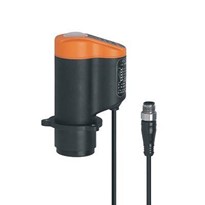Flood gates control the flow of water in reservoir, rivers, stream or dams. They are integral parts of flood prevention systems as they control the water level in the channels when the water level is approaching a flood stage. As flood gates are commonly located in a difficult-to-access and remote locations, flood gate operators face challenges in acquiring accurate and reliable data of flood gate position. Wireless sensors can be used to remotely monitor flood gate position, eliminating the need for visual measurement.
Problem Statement
A Queensland System Integrator was contracted by the local water authority to measure the position of the flood gates. Wireless sensors are to be used in the measurement tasks. The collected data need to be transmitted back to the base station that is located 400 meters from the gates. The data will be uploaded to the customers’ SCADA systems for monitoring purposes.
As the gates are located in remote location, the customers face challenges to implement a sophisticated monitoring system due to the unavailability of power sources. The gates were also designed in a way that it is difficult to mount level sensors for direct measurement. The customers also encounter issues with gate vibrations due to wind movement. They have also attempted to use tilt sensor to measure the gate position and they had failed to deliver an outcome.
Solutions
Bestech decided to use the wireless tilt sensor from BeanAir, HI-INC, to measure the position of the flood gate. The tilt sensor has up to 650 meters of wireless coverage and can store up to 1 million data points. The device is rated IP67 which means that it is dust resistant and water-proofed.
The sensors are installed on the arm of the gate. The gates’ position can be determined by triangulation calculations and measure the angle of tilt. A custom-made mounting bracket was used to mount the sensor in place in order to minimize the vibrational effect from the wind.
The HI-INC tilt sensor offers battery extender option and are suitable for long-term operations. This option reduces the need for maintenance cycle required and significantly decreases the operational costs. The BeanScape monitoring software also has a filter function to exclude vibration signal from the measured data
Technology Used:
BeanAir High Accuracy Wireless Inclinometer: HI-INC






























